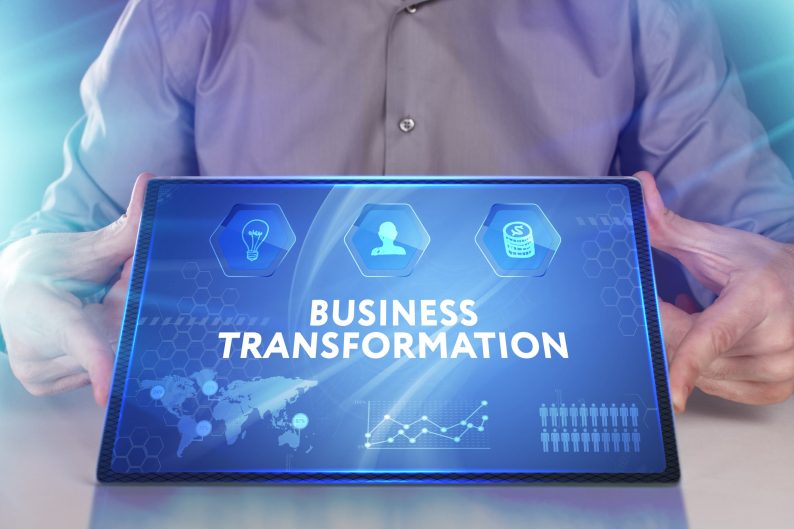Digitalisation: How SMEs Can Have A Fighting Chance At Surviving A Turbulent World
20 Jun 2022 | by Mweri Namandwa
Since 2020, the average Australian Small to Medium Enterprise (SME) has had to face forces and events of hitherto unprecedented scales. Immediately after the drought and bushfires, the COVID-19 pandemic began and since then, more socioeconomic, and environmental issues have arisen. Global shipping disruptions due to the Suez Canal blockage, flooding, the recent Ukraine War… The list of local and global disruptions goes on.
Any of these events on their own would have dealt enough of a damaging blow to the average company’s bottom line as well as short to medium-term survival. All of them in conjunction, as it has happened, however, have been – to say the least – devastating. Turning a profit and retaining one’s talented staff were and are not the only things at stake. Short- and long-term survival was and continues to be on the line.
According to a report by the Reserve Bank of Australia’s Small Business Advisory Panel, due to COVID-19 alone, the average Australian SME was more “disproportionately affected” in a negative way by the pandemic and that “small businesses were twice as likely to record a large decline in revenue as large businesses”. The report attributes this to the fact that the average SME operates in industries where the effects of the pandemic hit the most.
Although an update to this report acknowledged that there have been clear improvements in the economic outlook of all businesses in Australia, large and small, the SMEs are not out of the woods yet. COVID-19 is still among us, and even though we have come a long way since 2020, with vaccination rate targets being met across Australia and the opening of our borders to the world recently, there is still the risk of new variants to account for, in addition to other non-COVID-related issues.
So, handicapped by COVID-19’s widespread effects and further hit by a barrage of other socio, environmental, and economic matters, what is an SME supposed to do to survive?
The answer is not a simple one. This is because the pandemic has cast a shadow of doubt and uncertainty over the future. No one knows what will happen next and that is terrifying. However, there is a way in which the average SME can cope with the present as well as have a fighting chance with the future.
Digitalisation, as defined by Gartner, “is the use of digital technologies to change a business model and provide new revenue and value-providing opportunities; it is the process of moving to a digital business.”
Digitalisation has been identified as a key way in which SMEs can improve their business practices and achieve short and long-term benefits.
Our eBook: “Small Business to Digital Business” covers the benefits to SMEs of embracing and adopting advances in software technology and how doing nothing will ultimately hamper their ability to keep up with the evolving landscapes in which they compete.
In this blog, we will highlight the practical applications of digitalisation to combat a volatile present and an uncertain future for SMEs, with the above issues in mind. We will focus on 3 types of digitalisations: Cloud, Web-Presence and Enterprise Resource Planning (ERP) software.
1. Cloud:
At the beginning of the pandemic, SMEs had to quickly address the challenge of social distancing and employee safety in several ways. One of the main ways was deploying a work-from-home policy for the types of roles for which face-to-face interactions with customers was not necessary.
You might be surprised to learn that a significant number of SMEs were reportedly able to transition to a remote, working-from-home arrangement immediately, thanks to their having already implemented Cloud-based software technology before the pandemic began.
Consider, too, the sudden competitive advantage that SMEs with Cloud technology had and continue to have over their counterparts who have yet to adapt.
The ability to continue the momentum of one’s business activities despite requiring a change of environment was, and remains, integral to the short- and long-term success of the average SME. It not only inspires confidence from one’s customers to know that you will continue to meet their needs no matter where you are, but it also attracts new customers looking for a source of stability in an otherwise unstable world.
Thanks to their cloud software infrastructure, SMEs were also able to reduce or prevent their staff from fearing the future of their jobs and livelihoods. Furthermore, it has been reported that there is currently a behavioural shift in the average Australian worker increasingly looking for and expecting hybrid roles. This expectation leaves those SMEs with the ability to cater to these arrangements in good standing to attract new and retain current, talented employees.
2. Web Presence:
Australia is one of the highest-ranked countries in the world for online engagement and eCommerce activity, having reported to be willing to spend more money online. Due to the pandemic, Australia’s online purchases significantly increased when compared to pre-COVID-19 times and this increase in online spending was not only enjoyed by purely online retail companies; physical retailers with a web presence also garnered a lot of online traffic.
As such, having a web presence is just another way in which the average SME can capitalise on changing customer behaviours through digitalisation.
3. ERP Software:
Enterprise Resource Planning (ERP) software is end-to-end software which enables businesses to have a full view of and manage their entire business activities in an integrated platform. If the right ERP software is selected, it can not only enable SMEs to move to the Cloud, but it can also allow the introduction of a web presence into a business model by way of integration.
Traditionally, ERP systems have been seen as software tools only appropriate for large, multinational companies. This is far from true. There are ERP systems which cater specifically to SMEs in both cost and functionality. MYOB Acumatica(formerly MYOB Advanced) is one such ERP system. Not to be confused with MYOB AccountRight and other such MYOB Accounting systems, and not to be mistaken for an add-on, MYOB Acumatica(formerly MYOB Advanced) is an enterprise-wide Cloud-based ERP software which incorporates Financial Management, Supply Chain Management, Customer Management, Manufacturing Management, Payroll and Workforce Management, Business Intelligence and Reporting and more within a single platform.
Since MYOB Acumatica(formerly MYOB Advanced) is Cloud-based and enables eCommerce integration, it already serves as a good digitalisation jumping-off point to SMEs. It also offers the typical benefits of adopting an enterprise-wide solution, such as:
- moving away from manual and paper-based processes and increasing efficiencies in managing time and resources;
- getting rid of information silos born from having multiple disparate systems and instead, providing a single source of truth;
- having access to sophisticated reporting and business intelligence tools which provide vital insights into trends and performance data which is vital in making informed and timely strategic decisions to pivot against adverse local and global forces.
Our eBook: “Small Business to Digital Business” goes through more benefits of digitalisation for the average SME.

Mweri has 7 years ERP marketing and sales experience. Mweri has helped more than 100 companies select the right ERP solution to help their businesses grow. With an excellent understanding of the ERP selection process, Mweri has extensive knowledge of customer ERP requirements across multiple industries.





Leave a comment